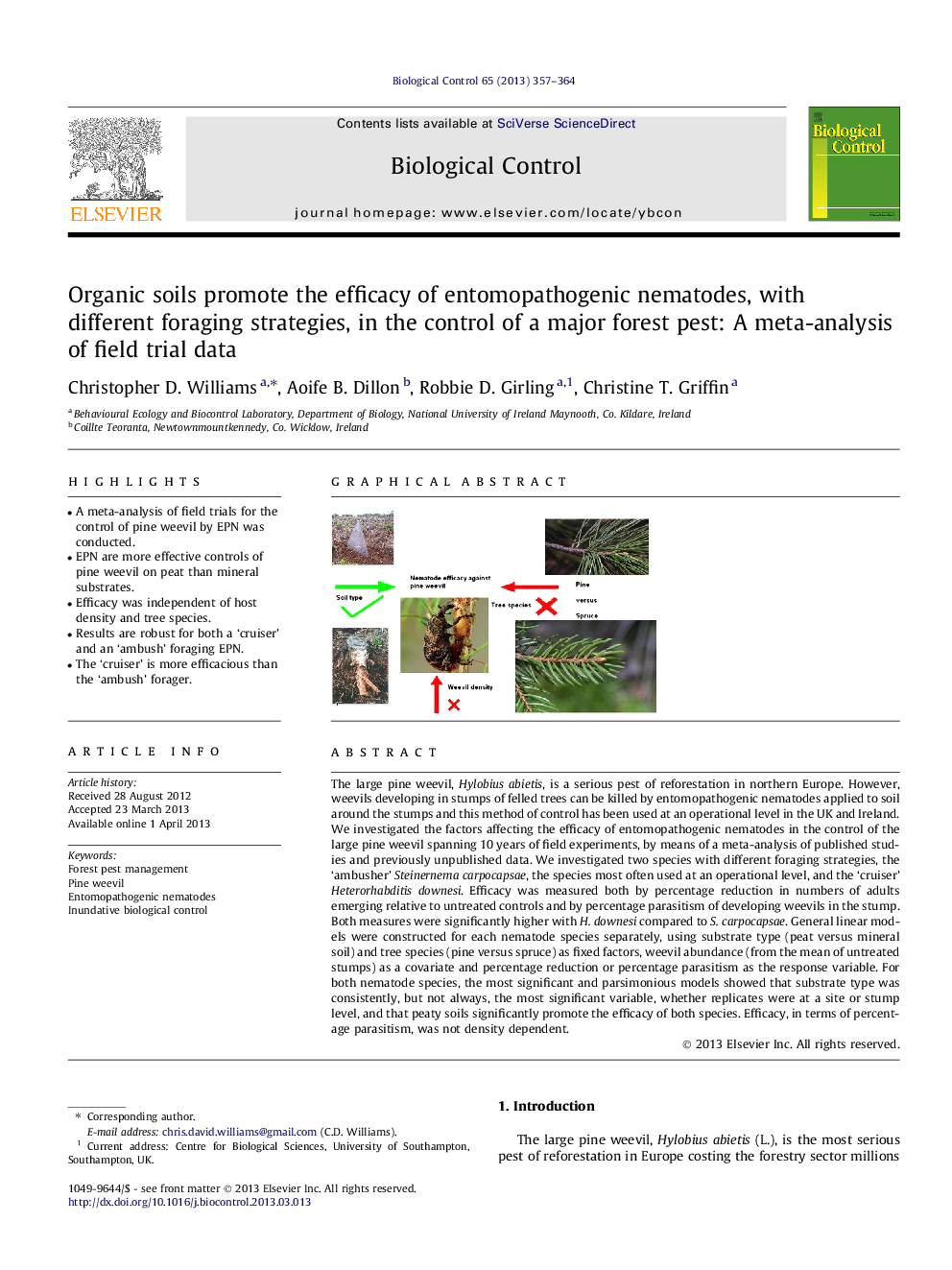| کد مقاله | کد نشریه | سال انتشار | مقاله انگلیسی | نسخه تمام متن |
|---|---|---|---|---|
| 4504032 | 1321053 | 2013 | 8 صفحه PDF | دانلود رایگان |

• A meta-analysis of field trials for the control of pine weevil by EPN was conducted.
• EPN are more effective controls of pine weevil on peat than mineral substrates.
• Efficacy was independent of host density and tree species.
• Results are robust for both a ‘cruiser’ and an ‘ambush’ foraging EPN.
• The ‘cruiser’ is more efficacious than the ‘ambush’ forager.
The large pine weevil, Hylobius abietis, is a serious pest of reforestation in northern Europe. However, weevils developing in stumps of felled trees can be killed by entomopathogenic nematodes applied to soil around the stumps and this method of control has been used at an operational level in the UK and Ireland. We investigated the factors affecting the efficacy of entomopathogenic nematodes in the control of the large pine weevil spanning 10 years of field experiments, by means of a meta-analysis of published studies and previously unpublished data. We investigated two species with different foraging strategies, the ‘ambusher’ Steinernema carpocapsae, the species most often used at an operational level, and the ‘cruiser’ Heterorhabditis downesi. Efficacy was measured both by percentage reduction in numbers of adults emerging relative to untreated controls and by percentage parasitism of developing weevils in the stump. Both measures were significantly higher with H. downesi compared to S. carpocapsae. General linear models were constructed for each nematode species separately, using substrate type (peat versus mineral soil) and tree species (pine versus spruce) as fixed factors, weevil abundance (from the mean of untreated stumps) as a covariate and percentage reduction or percentage parasitism as the response variable. For both nematode species, the most significant and parsimonious models showed that substrate type was consistently, but not always, the most significant variable, whether replicates were at a site or stump level, and that peaty soils significantly promote the efficacy of both species. Efficacy, in terms of percentage parasitism, was not density dependent.
Figure optionsDownload as PowerPoint slide
Journal: Biological Control - Volume 65, Issue 3, June 2013, Pages 357–364